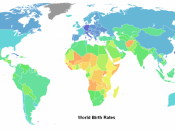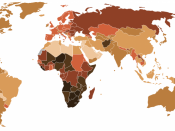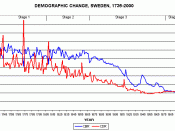In the 1700s, Thomas Malthus came up with the Malthusian Theory. In this theory he stated that the population growth would always place pressure on the ability of land and resources to support the population. Population is moving at a geometric progression, while land and resources moves at an arithmetic progression. Therefore the population is expanding at a more rapid pace than the land and resources that become available. It is becoming a serious problem to the world as time passes on and population still continues to grow at alarming rates.
There are "natural" ways to keep the population in balance with the land and resources. There are two "natural" ways to do this: Positive Checks and Preventive Checks. Positive Checks can be war, disease, famine, natural disasters and prostitution. Preventative checks helps to slow population in two ways. One way is through defined marriages. In a defined marriage, marriage occurs at a later age.
Celibacy is the second option, in which the individual never marries nor engages in sexual intercourse.
The stages a population growth a society moves through as it proceeds from primitive to modern is known as a demographic transition. Three entities are measured within this demographic chart are birth rate, death rate and the rate of natural increase, which is dependent on birthrate and death rate. Birthrate is the number of people born into a society in a given year. Death rate is the number of people who die in a society in a given year. The rate of natural increase, also known as RNI, is the number of people born minus the number of people who die in a given year. However, demographic transition is independent on what state a country is in. There are three types of countries: the less developed, developing and...


